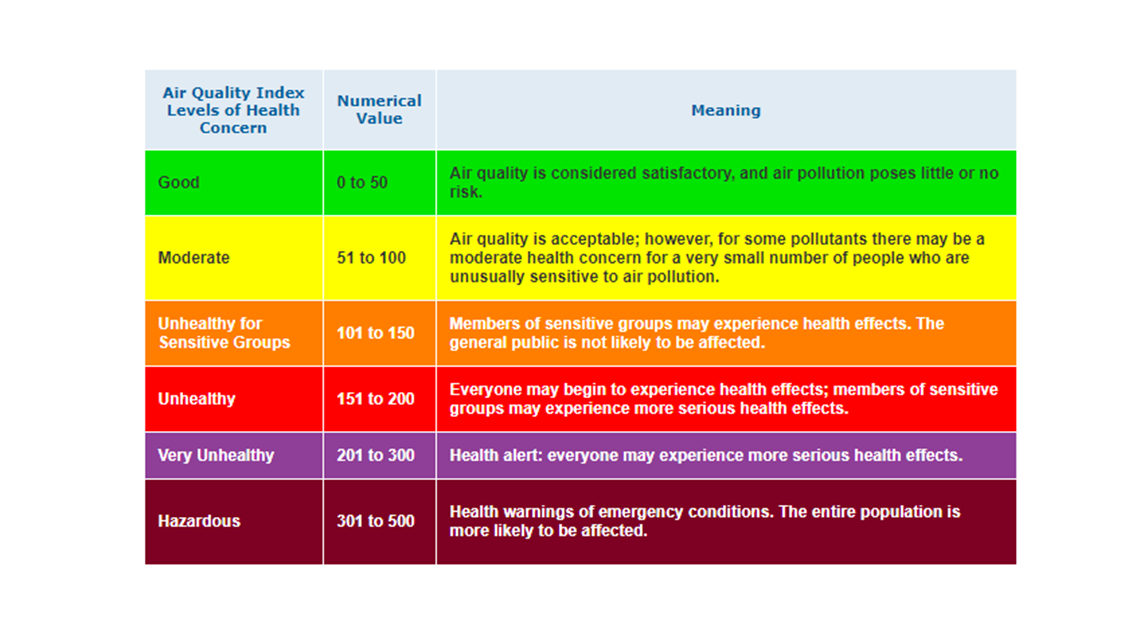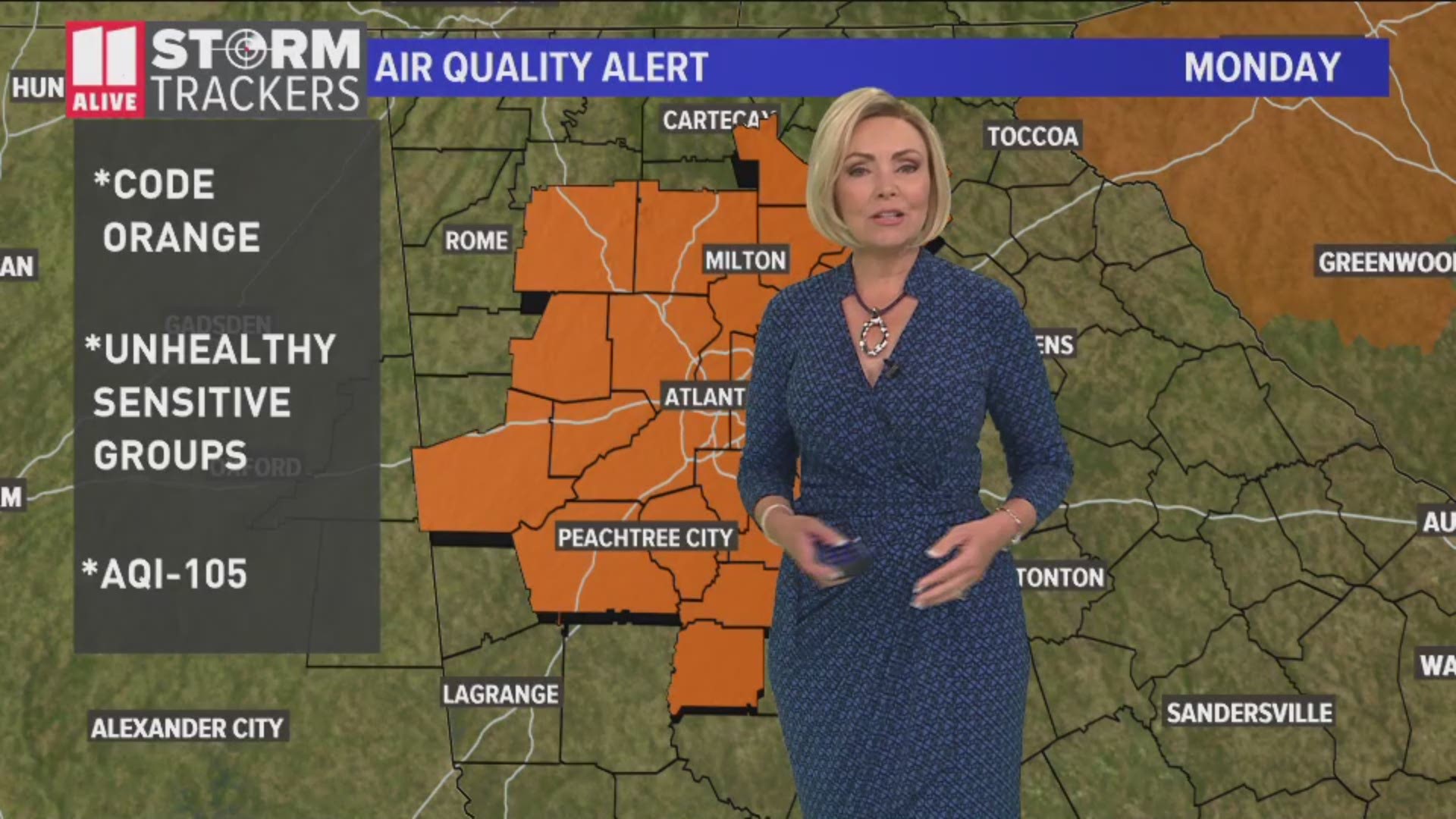ATLANTA — A Code Orange Air Quality Alert has been issued for metro Atlanta for Monday, July 29.
Under Code Orange conditions, the outdoor air quality is likely to be unhealthy for some people.
Children, people who are sensitive to ozone and people with heart or lung disease should limit prolonged outdoor exertion during the late afternoon or early evening hours, when ozone concentrations are at their highest.
What does this mean for you?
According to the federal Environmental Protection Agency, the Air Quality Index is measured on a 500-point scale. The values on that scale are also tied to a six-point, color-coded system -- from Code Green (Good) to Code Maroon (Hazardous).


Each category corresponds to a measure of air quality that helps determine the level of health concern.
- When the Air Quality Index is between 0 and 50, conditions are considered Good and are listed as Code Green. In this category, air pollution poses little or no risk.
- With an Air Quality Index between 51 and 100, conditions are listed as Code Yellow and are considered Moderate. Air quality is considered acceptable, but there may be a moderate concern for a small number of people.
- An Air Quality Index of 101 to 150 brings Code Orange conditions. The air is considered Unhealthy for Sensitive Groups. People with lung disease, older adults and children are at greater risk from exposure to ozone, whereas persons with heart and lung disease, older adults and children are at greater risk from the presence of particles in the air.
- An Air Quality Index of 151 to 200 will result in Code Red conditions. At that point, the air is considered Unhealthy. Everyone may begin to experience some adverse health effects, and members of the sensitive groups may experience more serious effects
. - When the Air Quality Index is 201 to 300, the conditions hit Code Purple and termed Very Unhealthy. This would trigger a health alert signifying that everyone may experience more serious health effects.
- With an Air Quality Index of 301-500, conditions are at Code Maroon and considered Hazardous. This condition would trigger a health warning of emergency conditions. The entire population would be more likely to be affected by these conditions.
According to the EPA, the air quality is a measure tied to five major air pollutants that are regulated by the Clean Air Act: ground-level ozone, particle pollution -- or particulate matter, carbon monoxide, sulfur dioxide and nitrogen dioxide.
POWER OUTAGES CHECK | Georgia Power customers, check here. Georgia EMC customers check here.
Have a news tip? Email news@11alive.com, visit our Facebook page or Twitter feed.

